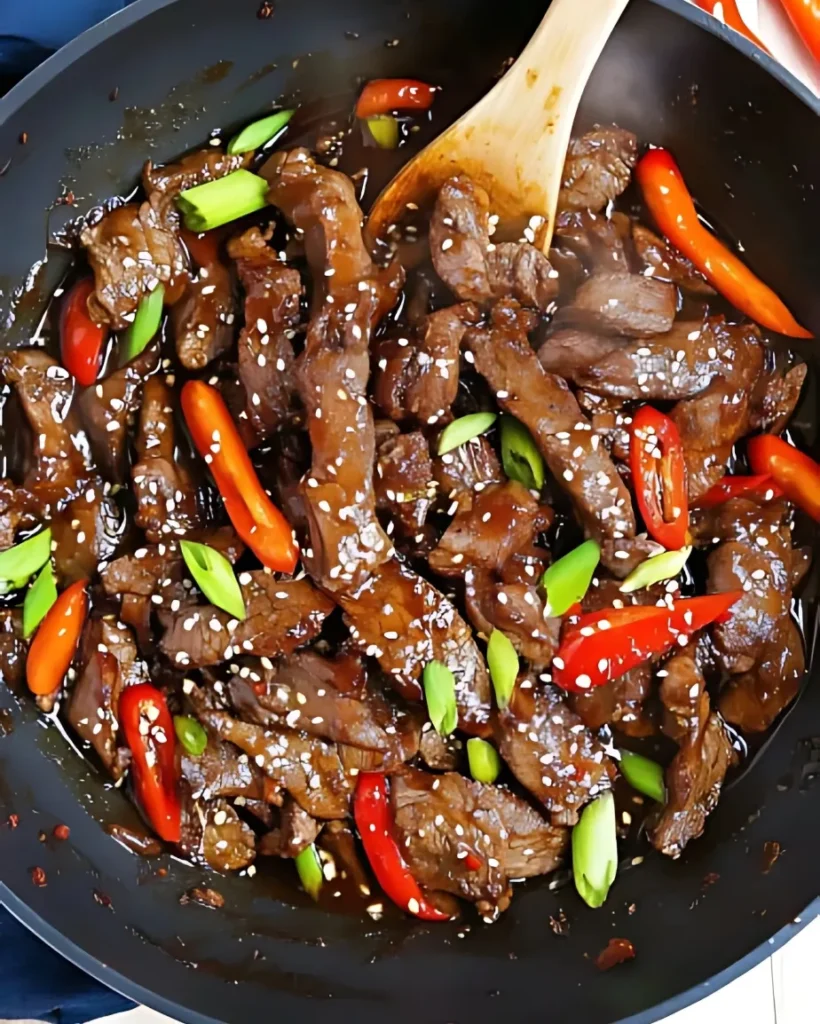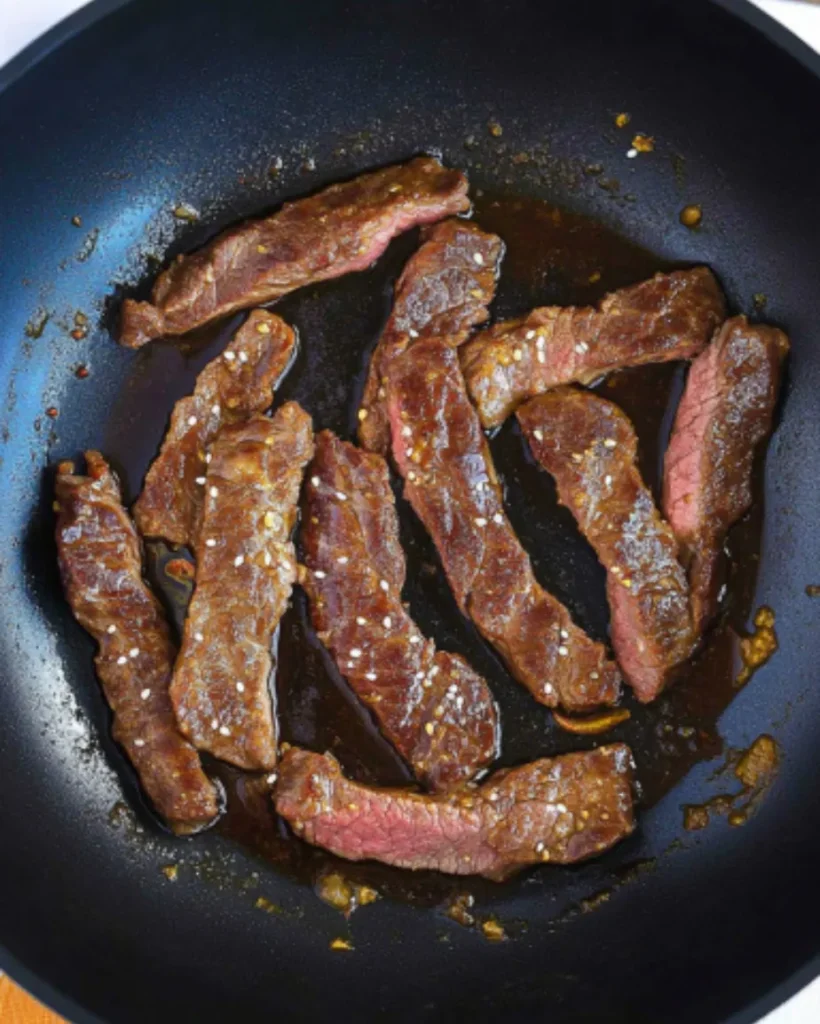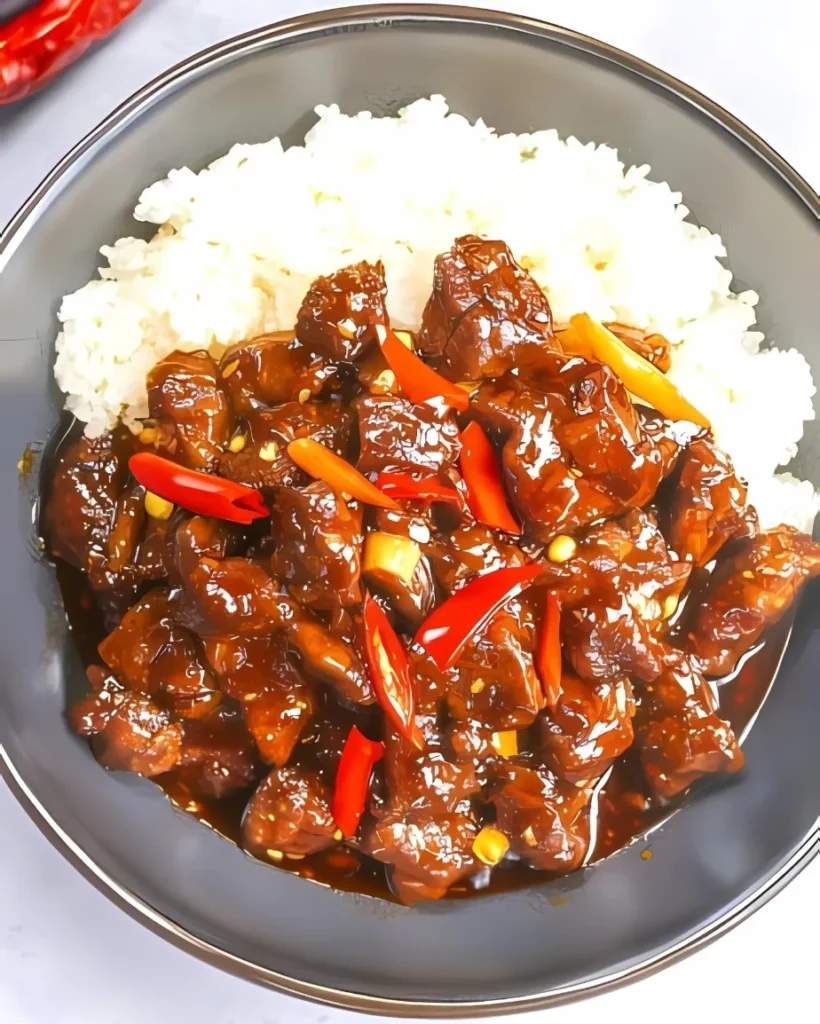The first time I tasted Beijing beef, it was a game-changer. The crispy edges and vibrant sauce were unlike anything I’d had before. It made me want to turn my kitchen into a restaurant, making this Chinese dish a homemade gem.
Imagine whipping up a restaurant-quality Beijing beef recipe at home. This dish is more than food; it’s an adventure in Chinese-American flavors. It’s perfect for anyone, whether you’re new to cooking or a pro.
Beijing beef is more than a meal. It’s a flavorful journey that changes how you cook at home.
Key Takeaways
- Discover an authentic Beijing beef recipe you can make at home
- Learn techniques for achieving restaurant-quality crispy beef
- Understand the perfect balance of sweet and tangy flavors
- Create a delicious meal in under 30 minutes
- Explore the rich tradition of Chinese-American cuisine
What is Beijing Beef and Its Origins
Beijing beef is a tasty mix of Chinese cooking and American flavors. It started in Chinese-American cuisine, blending old flavors with new tastes. This dish is different from traditional Chinese food but still keeps its cultural essence.
The story of Beijing beef begins in restaurant kitchens. Chefs mixed crispy, battered beef with Chinese cooking methods. This created signature dishes in Chinese-American restaurants across the U.S.

Traditional Chinese Influences
Traditional Chinese cooking shaped Beijing beef. Key traits include:
- Balanced flavor profiles
- Emphasis on texture contrasts
- Quick cooking techniques
The authentic Beijing beef uses stir-frying and precise meat cutting from Chinese traditions.
Evolution in American Chinese Cuisine
Chinese immigrants changed their recipes for local tastes, creating Beijing beef. The dish evolved with sweeter sauces and crispier textures to please American diners.
Key Characteristics of Authentic Beijing Beef
Knowing authentic Beijing beef means understanding its unique traits:
- Crispy outside with soft meat inside
- Sweet and tangy sauce
- Flavors that balance perfectly
Essential Ingredients for Beijing Beef
To make authentic Beijing beef, start with the right Chinese cooking ingredients. Choose high-quality beef for stir-fry. Flank steak or sirloin cuts are best for tender, flavorful results.
For the perfect Beijing beef, you need proteins and fresh veggies. Your main protein should be:
- Thinly sliced flank steak
- Lean sirloin cuts
- Tender beef strips
Vegetables add color and crunch. Use crisp bell peppers and sweet onions. They match the meat’s rich taste.
Key sauce ingredients make your dish stand out. Essential flavors include:
- Hoisin sauce
- Soy sauce
- Rice vinegar
- Garlic
- Ginger
Choose fresh and quality ingredients. Pro tip: Asian grocery stores have special ingredients. They make your Beijing beef taste like restaurant food.
Step-by-Step Cooking Instructions
Learning to cook Beijing beef needs focus and knowing key cooking skills. The process has several important steps. These steps turn simple ingredients into a dish that tastes like it came from a restaurant. By mastering stir-fry techniques, your Beijing beef will go from good to great.

Marinating the Beef
Marinating beef is key for tender, tasty meat. Begin by cutting your beef into thin strips against the grain. Mix up a marinade with:
- Soy sauce
- Cornstarch
- Baking soda
- Minced garlic
Let the beef soak in this mix for 15-20 minutes. This makes the meat tender and flavorful. For more on marinades, check out authentic Beijing beef recipes.
Proper Frying Technique
Stir-fry skills are vital for a crispy outside. Heat your wok or skillet very hot. Add oil and make sure it’s at 375°F. Fry the beef in small batches to keep the heat high and avoid overcrowding.
Drain the fried beef on paper towels to get rid of extra oil. A pro tip from professional chefs is to keep the beef moving for even cooking.
Combining and Final Steps
The last step is combining everything. Sauté your veggies quickly, then add the crispy beef back in. Pour your sauce over it, stirring to coat well. Cook for 1-2 more minutes to blend the flavors.
Serve it hot with steamed rice. Enjoy your perfectly cooked Beijing beef!

Tips for Achieving Restaurant-Quality Results
Mastering Beijing beef needs precision and knowing key Chinese cooking techniques. Start with preparation. Chop and measure all ingredients before cooking. This ensures smooth cooking and avoids burning or overcooking.
High heat is key for authentic Beijing beef. Use a heavy-bottomed wok or cast-iron skillet for even heat. Slice beef against the grain for tenderness. This makes thin pieces that cook fast and soak up marinade well.
Temperature control is crucial. Keep medium-high heat for a crispy outside and juicy inside. Don’t overcrowd the pan to avoid steamed meat.
Play with sauce consistency by adjusting cornstarch. Taste and adjust the sauce until it’s just right. Add green onions and sesame seeds for a restaurant-like look.
FAQ
What cut of beef works best for Beijing Beef?
Flank steak or sirloin are top choices for Beijing Beef. They are lean, tender, and soak up marinades well. This makes the beef flavorful and crispy when stir-fried.
Can I make Beijing Beef gluten-free?
Yes, making it gluten-free is easy. Use tamari instead of soy sauce and pick gluten-free hoisin sauce. Always check labels to confirm ingredients.
How long should I marinate the beef?
Marinate the beef for 15-30 minutes at room temperature for best flavor and tenderness. Don’t marinate longer than 30 minutes to avoid it becoming too salty or tough.
What vegetables can I add to Beijing Beef?
Besides bell peppers and onions, try broccoli, carrots, or snap peas. They add nutrition and variety to your dish.
How do I prevent the beef from becoming tough?
Slice the beef against the grain and cook it quickly. Use high heat and cook in small batches. This keeps the meat tender and crispy.
What can I serve with Beijing Beef?
Serve it with steamed white rice, brown rice, or cauliflower rice for a low-carb choice. Stir-fried veggies or egg rolls make a great complete meal.
Can I make this recipe spicy?
Yes! Add red pepper flakes, sriracha sauce, or diced chili peppers to the sauce. This will make it spicier to your liking.
How long will Beijing Beef keep in the refrigerator?
Store leftovers in an airtight container in the fridge for 3-4 days. Reheat in a skillet over medium heat to keep it crispy.


4 thoughts on “Beijing Beef Recipe”